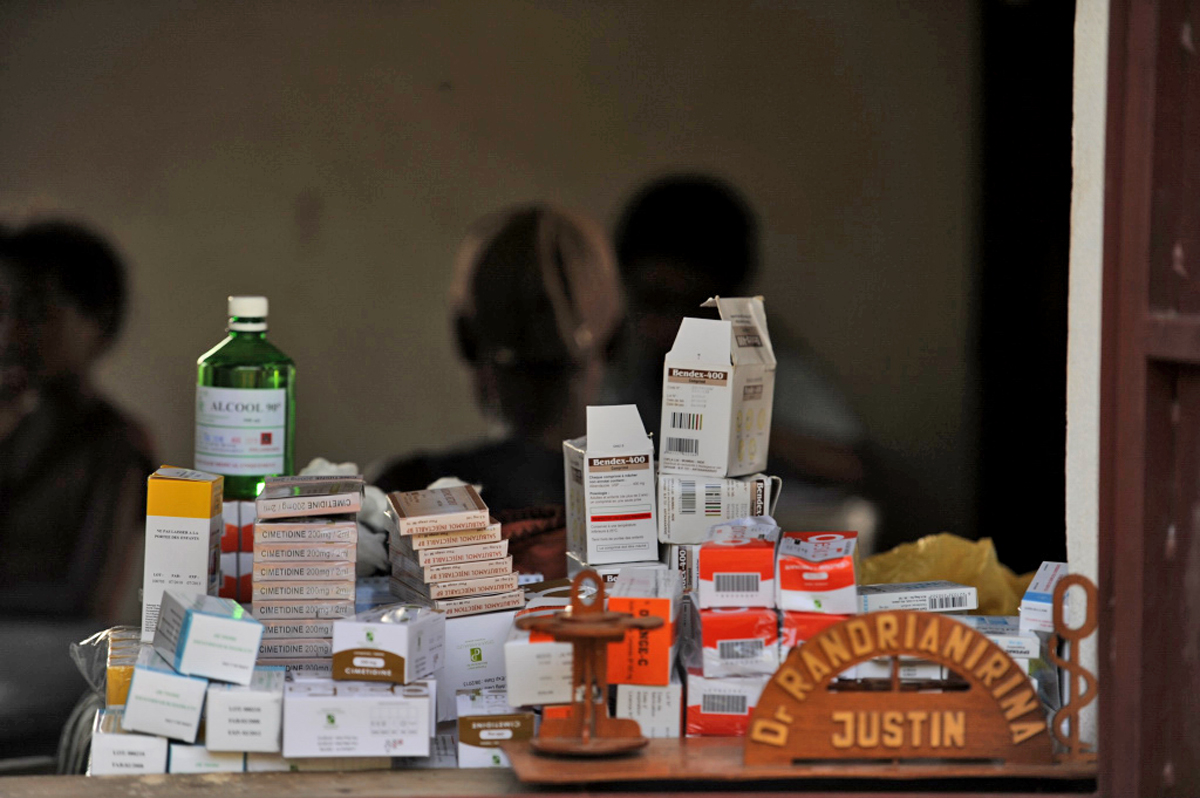The majority of Africa’s private medicine sellers do not operate out of established pharmacies. Aspirin and cough syrup, antibiotics and malaria pills are tucked in among the pomade and toothpaste in run-down `dukas’ and on dusty market stalls; packets of pills are strapped onto the display boards of itinerant hawkers or pinned to open umbrellas.
These vendors are controversial. They have no medical training, they sell without prescription, and with no guarantee the drugs are genuine and still in date. But they can be a godsend if you live in a village far from the nearest clinic or pharmacy, or if your child has a fever late in the evening when all the more official sources of medicines are shut.
Around 10 years ago it was clear that in countries depending on private vendors of anti-malarials there was a big problem. Although effective artemisinin drugs were available, most private vendors were still selling older, cheaper drugs like chloraquine, which were no longer effective. Where they did sell artemisinin drugs, they were likely - again for cost reasons - to be the simple variety (monotherapy) that looked very likely to cause a build-up of resistance, rather than the combined drugs like Coartem, which were more expensive.
So a plan was proposed to flood the market with high-quality, combined therapy drugs at heavily subsidized prices. It was hoped that this would increase availability in both private outlets and public clinics, reduce prices so that the best drugs would be as cheap as the less effective ones, and displace the risky monotherapies, which the World Health Organization (WHO) was hoping to phase out altogether.
The plan was put into practice as a pilot project in eight countries, funded mostly by the UK’s Department for International Development and the Bill and Melinda Gates Foundation, and administered by the Global Fund. Now an independent evaluation of that pilot has been published and the board of the Global Fund is meeting in nine days to decide whether AMF has worked as was intended, and whether it should be continued, scaled up, or abandoned altogether.
Mixed results
The results, frankly, were mixed, and varied enormously between countries. The biggest effect was seen in the private sector, which responded quickly to the offer of lower priced drugs. In six of the eight countries (but not Niger and Madagascar) artemisinin-combination therapies (ACTs) became much more available in the first year of the project and took a substantially larger share of the market. Again in most countries, but not all, the high-quality drugs became much cheaper - in the case of Tanzania the price fell to around one fifth of its former level. But the price fall in Uganda was tiny, and the price in Madagascar actually rose a little.
The result of the evaluation was welcomed by the scientists who put together the original plan. A comment in the London-based journal, the Lancet, said AMF “had transformed access to effective anti-malarials” in seven countries that represent a quarter of the world’s malaria cases.
Others have been less welcoming. Oxfam has published an extremely critical paper warning against such a heavy reliance on private providers and saying that even at subsidized prices, the drugs are still out of reach of the poorest people. It also points out that many childhood fevers are not caused by malaria, and that treating fevers indiscrimately with anti-malarials is both wasteful and dangerous.
Diagnosis vital
Oxfam’s senior health policy adviser, Mohga Kamal Yanni, said: “A shopkeeper selling salt, pepper and malaria medicines cannot diagnose or treat a child with pneumonia. It is dangerous to put the lives of sick children in the hands of a shopkeeper with no medical training and to pursue a scheme that doesn’t help those people who need it the most.”
At the London School of Hygiene and Tropical Medicine, Toby Leslie, a researcher with the ACT Consortium, is more measured, but agrees that the encouragement to treat without proper diagnosis is AMF’s weak point. “Undoubtedly it has improved access to ACTs in most of the countries where it has been tested,” he told IRIN, “and that’s definitely encouraging.
“But one of its drawbacks is that it has essentially replaced one bad system with another bad system, albeit with better drugs. There’s no access to diagnosis, and what we would once have assumed to be malaria, we now know is often not malaria. What we need now is what I would call `son of AMF’, with better targeting. There’s a lot of movement on this, and a lot of voices trying to be heard. There’s a long way to go, but it would be a shame just to drop the ball, undermining any gains that have been made.”
Oxfam is unlikely to be the only group campaigning against a continuation of AMF at the Global Fund meeting in Geneva. It has never been popular with the US government, and has not received any funding from the president’s Malaria Initiative. Campaigners on malaria issues say the Facility is unlikely to be continued in its present form, but the subsidy system could continue on a country by country basis.
One such campaigner told IRIN that the transition would have to be carefully managed. “With this kind of programme,” she said, “you can’t just have a hard stop. That would lead to stock-outs, not just in the private, but also in the public sector. You need a transition period for each of the pilot countries to figure out the best way forward for them, so that you don’t put people at risk.”
eb/cb
This article was produced by IRIN News while it was part of the United Nations Office for the Coordination of Humanitarian Affairs. Please send queries on copyright or liability to the UN. For more information: https://shop.un.org/rights-permissions





